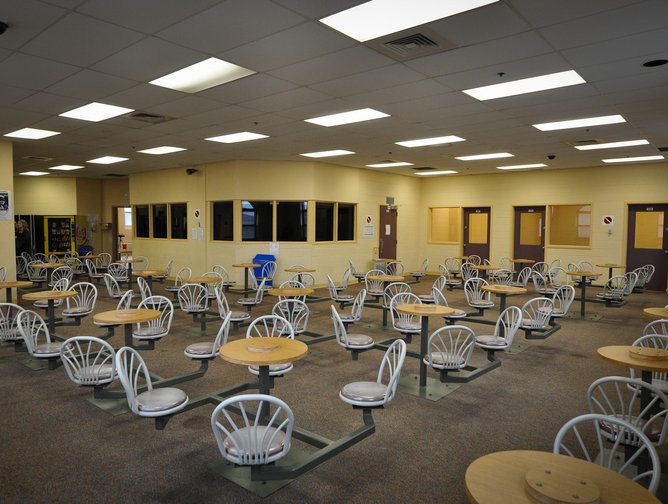Responsible for administering sentences of two years or more as imposed by the courts, the Correctional Services of Canada (CSC) is a federal government agency that actively encourages and assists offenders in their rehabilitation and reintegration journey of becoming law-abiding citizens.
“At the core of it, CSC is about ensuring the safety and protection of Canadians, by equipping offenders with the tools they need to successfully return to our communities” explained its CIO, Simon Bonk.
“Our business line is unique compared to other government departments. We're not a policy department. We deal with folks that have made bad choices in their life. We need to provide them with the support and tools to be able to make better choices. The vast majority of the people that come to our institutions return to society, so they're going to be your neighbour or in your neighbourhood. We have a duty of care to create a safe and secure environment that allows offenders of various backgrounds to focus on the correctional programs that have been tailored to them. This makes for a really dynamic environment,” he added.
In his role, Bonk looks at the ways technology can both enable and inspire transformation to support CSC in meeting the demands of its complex offender population. In doing so, he has assisted the organisation in reimaging how corrections can operate differently, through the support of technology, to modernise.
“A modernised correctional service has the ability to drive greater effectiveness of rehabilitation during program delivery, greater offerings in services such as education, addictions management and mental health, and be adaptable to the diversity of offenders, in particular, addressing the diversity amongst Indigenous offenders rather than managing them as one population,” Bonk noted.
Within the last two years, CSC has introduced new technologies such as wifi, in contained areas of the institution, mobile devices for officers’ specified use, and; RFID tags to increase the effective management of offenders. It has also made substantial investments in its network and infrastructure, to ready CSC for the future of corrections.
“The innovation opportunities in corrections are endless, and the industry has lots of room for evolution,” said Bonk.
The impact of COVID-19 on CSC
As with all industries and organisations around the world, CSC has had to respond to changes brought about by the Coronavirus pandemic. Although in some cases, it has hindered activity and organisations have struggled, Bonk believes it has been an invaluable catalyst in the agency’s ability to adapt and adopt new technologies. He explained: “For my organisation, I would actually argue that our productivity has increased since COVID, due to the technologies and capabilities that we introduced.“
“We've been able to keep the business of corrections going and I think quite successfully.”
Bonk continued: “We have drawn from our service providers and our partners, like Cistel Technology Inc., to assist us in navigating the unknown. Through partnerships, we were able to augment our talented workforce to advance initiatives such as Microsoft 365 and Teams, which have been critical to CSC’s ability to operate during these unprecedented times.”
In response to public health policies and nationwide lockdowns, CSC drew on the opportunity to do things differently by increasing its uptake of virtual technologies. Bonk described it as a “silver lining” and explained: “We had to think about our business differently and become more innovative. As an example, before the pandemic loved ones could visit inmates, which was no longer possible due to isolation and social distancing protocols.
“To ensure families and friends remained connected, a critical ingredient to successful reintegration, we increased our video visitation usage by 300%. Similarly, we expanded our telemedicine program across Canada, to provide both virtual physical and mental health services to offenders, while respecting public health guidelines,” Bonk explained.
Not only did the organisation expand its use of video visitation and telemedicine programs to allow for the continuation of institutional services for offenders, but they also introduced a Virtual Correctional Program Delivery Model to support the rehabilitation of offenders by ensuring access to correctional programming anywhere, at any time.
“We were still trying to give them their rehabilitative programming to ensure their success when they are released,” said Bonk
“To do this, we had to increase our bandwidth and review our network infrastructure to facilitate our need for virtual services for offenders, but also for our staff,” he added.
However, this is a small drop in the ocean compared to what CSC could be doing with its adoption of digital technology. Describing the institutions as “small cities”, Bonk said: “Corrections agencies are similar to small cities, with an interconnected web of services and technologies. We have education, we have health, we have libraries, all of the things that a small city has to deal with. We need to look at all of our services and solutions holistically, to ensure we are able to realise all of the benefits of modernisation, without missing opportunities or implementing incompatible technologies or processes.”
Overcoming challenges in the adoption of emerging technologies
While the pandemic provided an opportunity for CSC to reimagine how it operated and delivered programs and services, it also highlighted some of the new correctional business capabilities that are required to modernize and adapt in a constantly changing environment.
In order to modernise effectively, Bonk said that the organisation is “planning a strategic way forward, that will be driven by business transformation and business outcomes to ultimately enhance the safety and prosperity of Canadian communities.”
Adding to this, he said: “We are approaching modernisation through three pillars: modernising our technical and real property infrastructure, focusing on driving a digital-first mentality and design, and; most importantly, preparing and supporting our people and our culture in successfully embracing new and improved correctional infrastructure, policy, processes and practices. Our people are critical in facilitating change.”
In terms of readying for the future, there are a number of challenges Bonk needs to consider when choosing the most appropriate technology for CSC’s institutions, including the thick walls of the institutions and remote location of its prisons: “A lot of our sites are not in the big metropolitan cities, they are in a smaller location, and spread out across the country. CSC’s jurisdictions span 3.85 million square miles and 3.5 time zones. Canada's a big country and high-speed internet isn't available everywhere,” Bonk said.
Not only does CSC have to overcome geographical challenges when it comes to implementing new technologies, but it also has to consider the infrastructure of its institutions and how this will affect the technologies introduced.
Bonk explained: “Some of our institutions are 100 years old. We're talking about walls that are three feet thick with rebar. We have to think differently about how we can provide these services in a modern way while considering that some of the infrastructures are dated.”
Modernising corrections can have profound impacts on society
To ensure that the organisation’s adoption of digital technologies keeps increasing, Bonk highlighted that investment and support from partnering companies and central agencies are essential. With this, he said: “Corrections globally needs to think about how to position itself effectively to optimise investment from central agencies.”
Bonk continued, “recidivism, and the ways to reduce it, is spoken about a lot in corrections. To elevate the narrative around correctional facilitates and the role they play, CSC wants to highlight how it is well equipped to reduce reoffending and improve outcomes for society.”
Outlining this, Bonk explained: “Modernisation can have broader impacts to Canada’s urban, rural and remote communities; strengthening employment opportunities for offenders, developing a skilled workforce in the communities where CSC has a presence, and supporting improvements in community social services are just a few ways CSC can positively impact the communities it is connected with.”
Harnessing partnerships to improve correctional services
Partnerships are invaluable to the success of CSC, by elevating this conversation and showcasing the societal benefits to rehabilitation, Bonk hopes this will strengthen the case for larger investments from central agencies. In turn, supporting the organisation as it continues to adopt digital technology to enhance outcomes for Canadians, staff and offenders.
He explains: “We'll be not just thinking about how we use technology, but also how we get those improved correctional outcomes that really benefit society. And we want to do that in a way that's inclusive, that works with our vendor partners as well as other correctional jurisdictions.”
Showcasing the significance of partnering with other organisations, is CSC’s partnership with Cistel Technology Inc. Cistel is a leader in the systems and telecommunications market. The company provides technical expertise and constant innovation to the civil security sector.
Bonk explained that the support and knowledge brought through the ongoing relationship with Cistel have been invaluable: “We would not be where we are today in enabling the business of corrections without their help. With Microsoft Teams and the cloud environment, Cistel has been instrumental in augmenting our skilled workforce, and helping us to position ourselves with the right talent and execution plan to gain a secure cloud environment.”
“CSC was one of the first seven departments in the Government of Canada to be able to access a secure cloud environment, and Cistel was instrumental in helping to do that. They're great partners, they understand where we're going and are able to work with us to make that happen,” Bonk added.
CSC’s strategic approach to modernization
In order to continue on this journey towards a modernised Correctional Service of Canada, Bonk and CSC are dedicated to building a modernisation approach that encompasses all aspects of CSC’s environment.
This holistic approach considers the needs of CSC staff, stakeholders and offenders. It will allow for increased access to tailored and timely interventions, offer an environment within the institutions that is reflective of the communities offenders will be reintegrated to, and strengthen decision-making and transparency for the benefit of all Canadians.
“What COVID has provided, is a two year proof of concept about the opportunity that technology can present,” said Bonk. He went on to add he is keen to build upon this foundation built by the pandemic in the coming years.
“CSC is an incredibly interesting and dynamic business line, and there's a lot of opportunities to transform and modernise and drive those better outcomes that lead to a better society.”
He concluded: “Change of this nature, however, is unlikely to occur organically. The modernisation of corrections will require advocacy, investment, and a clear vision of what modernisation means in the context of the business of corrections. It will require us to focus on our bricks and mortar, our technical capabilities, and most importantly our people and our culture, to embrace new and improved correctional infrastructure, policy, processes and practices. However, the potential for benefits realised over time by adopting a holistic approach could reshape corrections as we currently understand it.”






